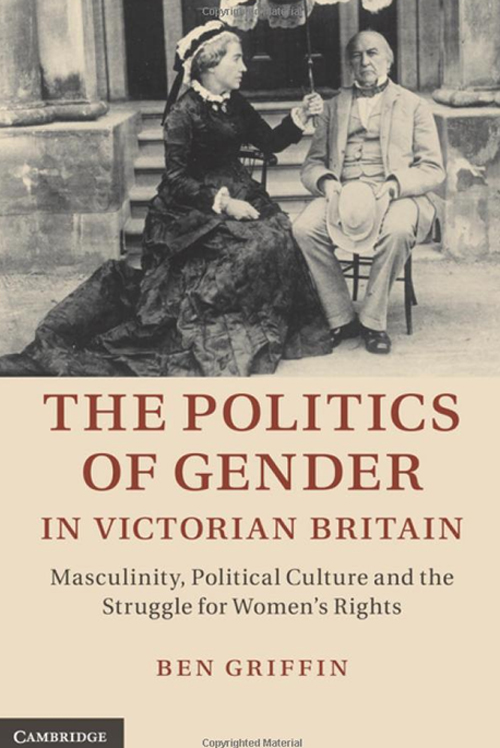The Politics of Gender in Victorian Britain
Review

The Politics of Gender in Victorian Britain: Masculinity, Political Culture and the Struggle for Women's Rights by Ben Griffin (Cambridge University Press), 2012 352pp., £60 hard, ISBN 978-1-107-01507-4
The last twenty years has seen a renaissance in the study of the struggle for women's rights in the nineteenth century but there has been less emphasis on contextualising the women's movement within its masculine context. This pioneering history of Victorian politics, feminism and parliamentary reform challenges traditional assumptions about the development of British democracy and the struggle for women's rights and demonstrates how political activity was shaped by changes in the history of masculinity and the changing nature of political culture. Part 1 consider the question of ‘feminism' and the history of women's rights and provides an invaluable analysis of feminism and anti-feminism. From the 1860s, Britain's all-male parliament began to transform the legal position of women as it reformed laws that had upheld male authority for centuries. The question of masculinity and the struggle for women's rights is explored in Part 2 of the book in an incisive analysis of the nature and erosion of Victorian domestic economy. To explain these revolutionary changes, Ben Griffin looks beyond the actions of the women's movement alone and shows how the behaviour and ideologies of male politicians were fundamentally shaped by their gender. He argues that changes to women's rights were the result not simply of changing ideas about women but also of changing beliefs about masculinity, religion and the nature of the constitution, and, in doing so, demonstrates how gender inequality can be created and reproduced by the state. Part 3 explores the question of political culture and women's rights focusing particularly on the Second and Third Reform Acts and the road to democracy from 1885 to 1906. This closely argued study should be essential reading for any teacher of the women's movement in the nineteenth century.

